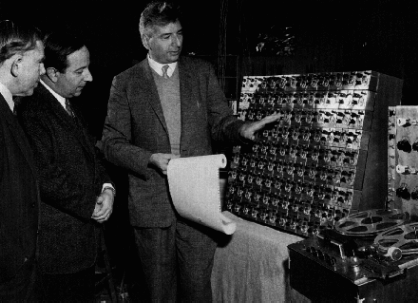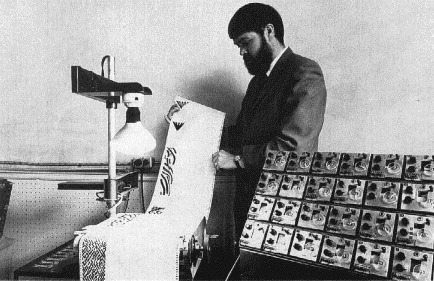 |
|
Oscillator Bank (1959) In 1957, Le Caine began work on an instrument to control complex sine-wave structures. Initially he built a bank of 16 oscillators controlled by touch-sensitive keys but by 1959 he had built a much larger array of 108 (9 x 12) oscillators that were to be controlled by touch-sensitive keyboards or by the Spectrogram.
By 1961, two more oscillator banks, one with 12 oscillators and the other with 24, were built and operated by touch-sensitive keyboards. Each oscillator was independently tunable and produced not only sine waves but also pulse waves, square waves, and saw-tooth waves. Since each oscillator required about one minute to tune, it took a composer almost two hours to tune a bank of 108 oscillators. The oscillator banks were used to generate electronic sounds which would be altered by standard studio methods such as playback speed on the multi-track or juxtaposition with other sounds.
|
Photographs courtesy of the Music Division of the National Library of Canada.
Website questions to: info@b2bweb.ca


